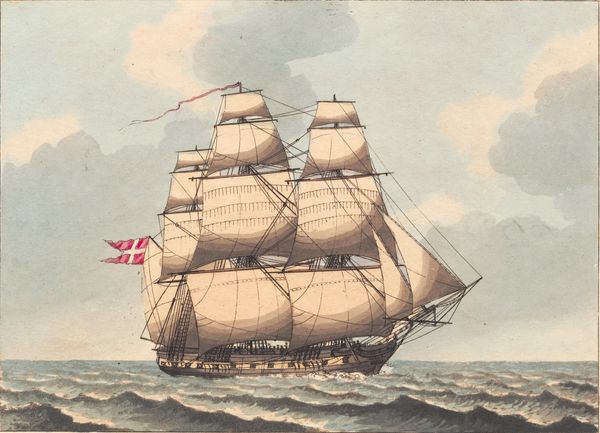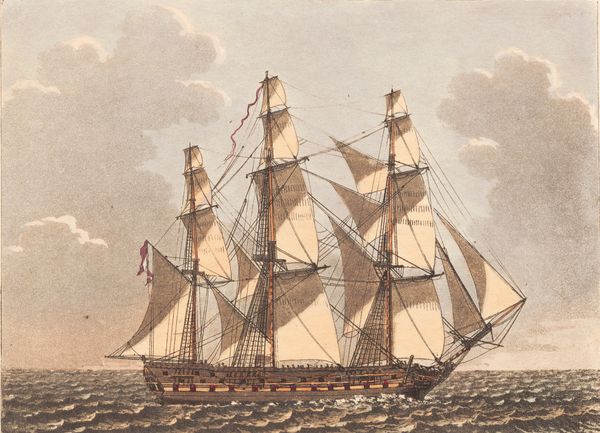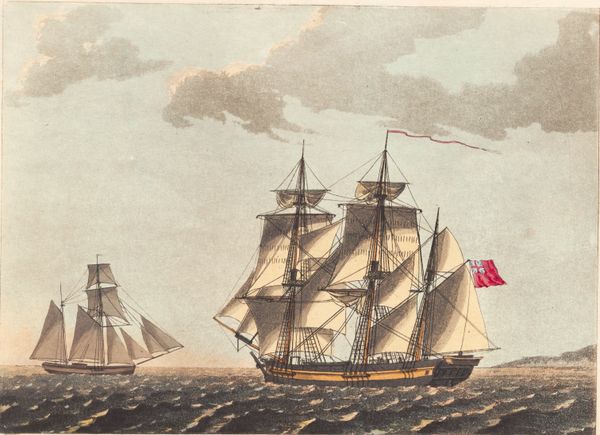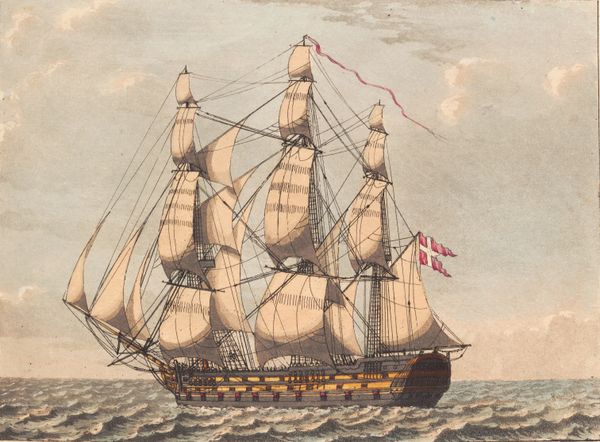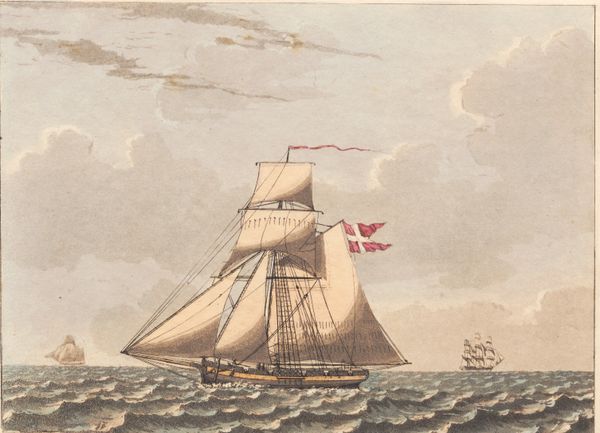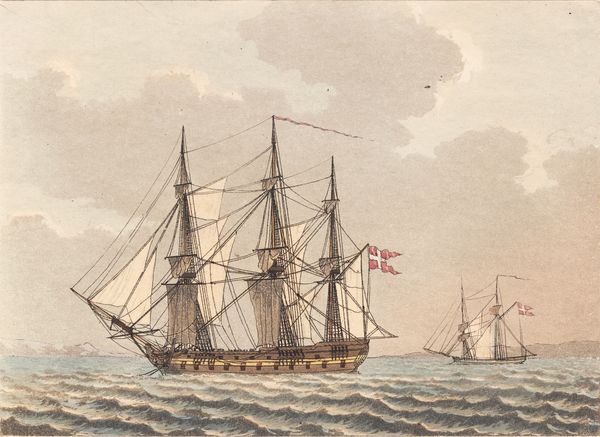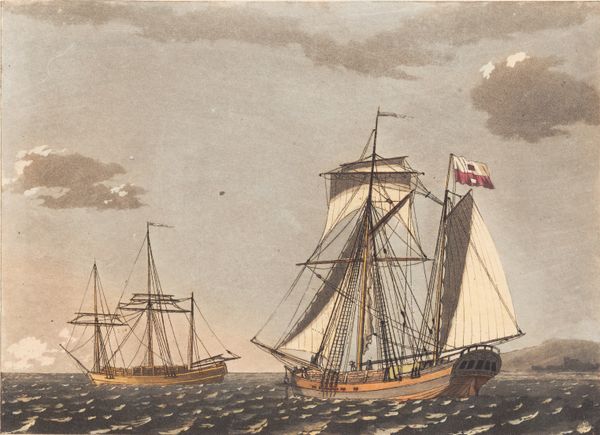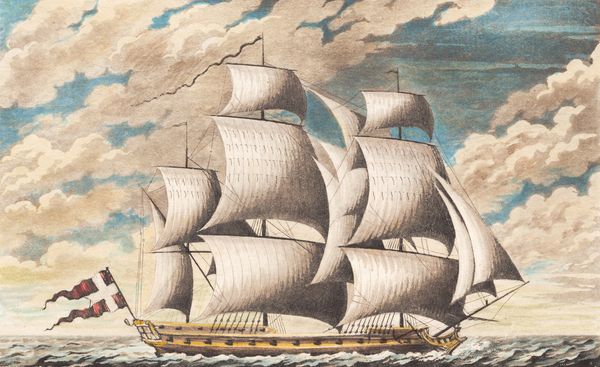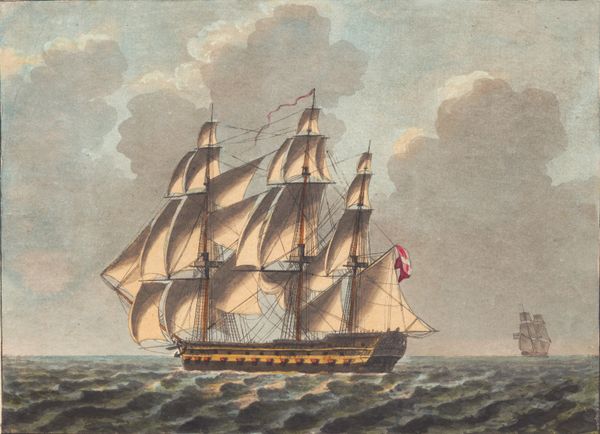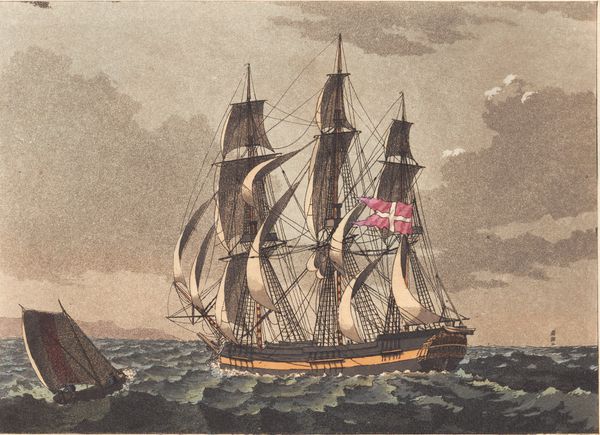
aquatint, print
#
aquatint
# print
#
landscape
#
romanticism
#
history-painting
Dimensions: 186 mm (height) x 237 mm (width) (bladmaal), 161 mm (height) x 216 mm (width) (Plademål), 141 mm (height) x 196 mm (width) (billedmaal)
Curator: Looking at "En russisk orlogs-brig for sidevind," a Russian war brig in a side wind, made in 1805 by Niels Truslew. The medium is listed as aquatint. Editor: My immediate reaction is… starkness. A very austere kind of beauty. It’s amazing how much detail he’s captured with, what is, a relatively limited tonal range. Curator: Indeed. The visual language carries that sense of northern Romanticism so well. See how the ship cleaves the waves—the psychological impact speaks to the power of human endeavor against the backdrop of nature’s force. There is a real tradition of viewing ships as symbols of journeys and destinies, often allegorical for life itself. Editor: It is definitely a material statement about human engineering as well. Look at the process – the labor to build such a vessel in 1805. The aquatint process too is about layers, about adding and subtracting – in a sense building an image like one builds a ship, bit by bit. The etchant, the paper, even the pigments, all coming from the earth. Curator: Right. That intersection between raw materials and crafted object really defines the early 19th century mindset. What stands out to me is how a naval flag instantly evokes notions of power, conflict, even trade. But consider what's missing, where are the sailors? The ships in a state of serene isolation, hinting perhaps at the sublime. Editor: It is true – their absence is unsettling. The lack of clear detail on the waves makes me think about the industrial labor needed to produce the paper in the first place and distribute it around. A beautiful object whose origins remain firmly embedded in earthly matter. Curator: The artist used this medium—aquatint—so purposefully. An aquatint can often look so painterly despite being a print. That's what makes it able to convey the atmosphere so effectively. And beyond craft and industry, let's not forget the context, the geopolitics encoded within a maritime image during the Napoleonic Wars. A quiet sea, perhaps masking turmoil. Editor: Absolutely, everything returns to the social circumstances around its making. This work exemplifies the meeting between human skill and our attempts to capture elements for our own understanding and even benefit. It highlights the human impact of building ships and then visualizing their movement across open waters. Curator: It truly invites reflections on so many levels of cultural memory. Editor: Agreed. A small print of profound impact.
Comments
No comments
Be the first to comment and join the conversation on the ultimate creative platform.

